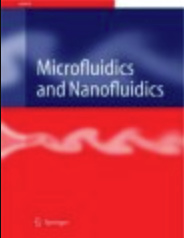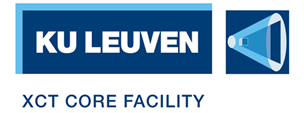Multiscale modelling of capillary imbibition in 3D-printed porous microfluidic channels
Abstract
 3D-printed porous microfluidics has been proposed to realize complex passive lab-on-chips. The performance of these devices depends on capillary flow design and control. To this end, a predictive multiscale model of capillary imbibition in porous channels obtained through powder-based 3D printing was developed. Pore-network modelling was used to obtain fluid flow characteristics of the printed material depending on the porous microstructure and hydrophilicity, coupled to the Richards equation. The latter was solved numerically to predict capillary flow in printed chips. Dynamic high-resolution microcomputed tomography (µCT) was employed for in situ verification of the capillary imbibition, which was found to be slower than theoretically expected. Channels with a larger cross-section demonstrated faster wicking, suggesting higher hydrophilicity. Multiscale simulations suggest that this phenomenon as well as the delayed imbibition initiation are caused by modifications of the porous channel surface during and after 3D printing
3D-printed porous microfluidics has been proposed to realize complex passive lab-on-chips. The performance of these devices depends on capillary flow design and control. To this end, a predictive multiscale model of capillary imbibition in porous channels obtained through powder-based 3D printing was developed. Pore-network modelling was used to obtain fluid flow characteristics of the printed material depending on the porous microstructure and hydrophilicity, coupled to the Richards equation. The latter was solved numerically to predict capillary flow in printed chips. Dynamic high-resolution microcomputed tomography (µCT) was employed for in situ verification of the capillary imbibition, which was found to be slower than theoretically expected. Channels with a larger cross-section demonstrated faster wicking, suggesting higher hydrophilicity. Multiscale simulations suggest that this phenomenon as well as the delayed imbibition initiation are caused by modifications of the porous channel surface during and after 3D printing
Read more: https://link.springer.com/article/10.1007/s10404-022-02528-0
